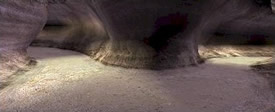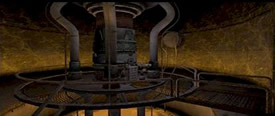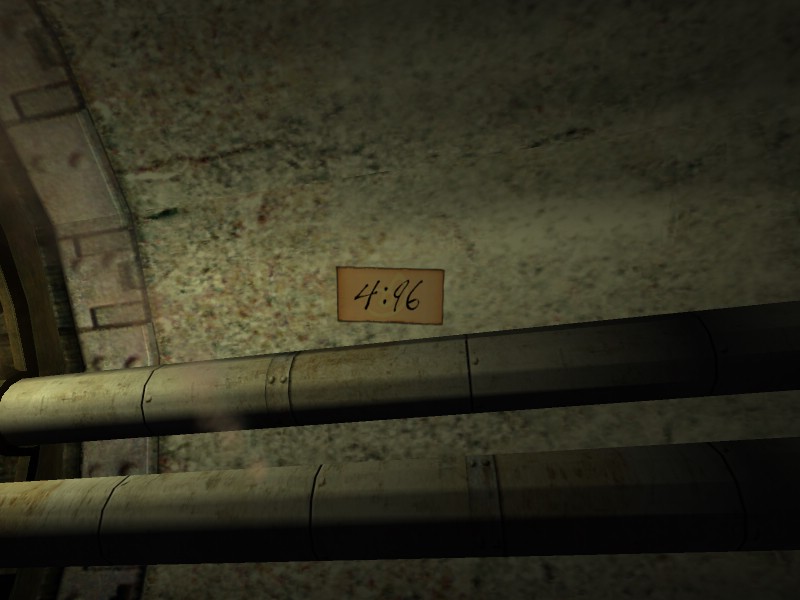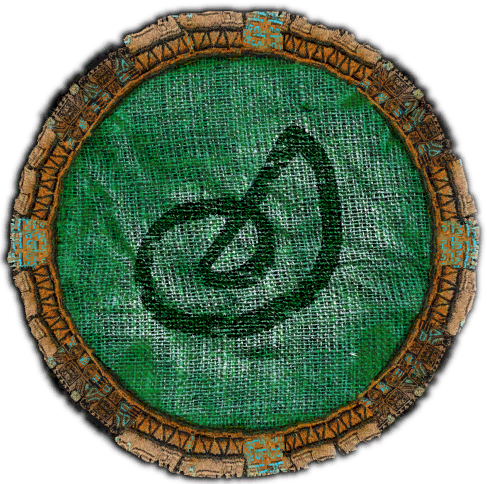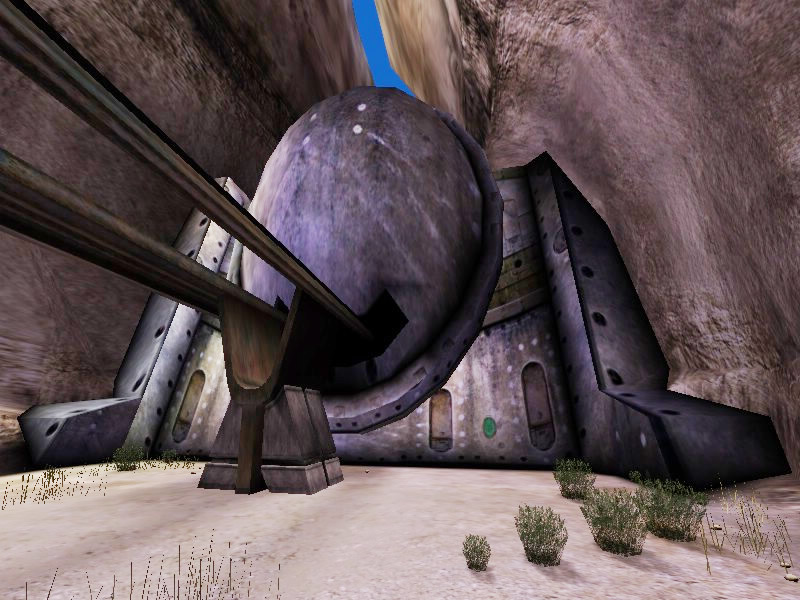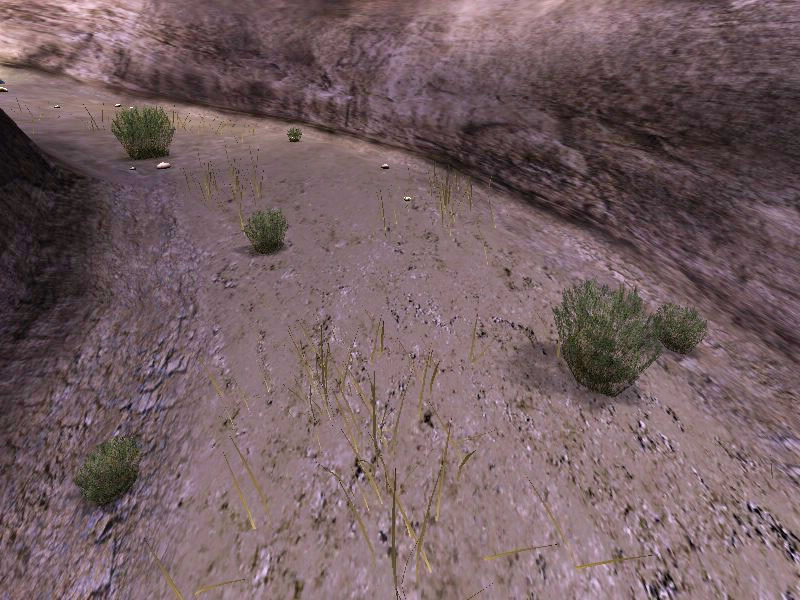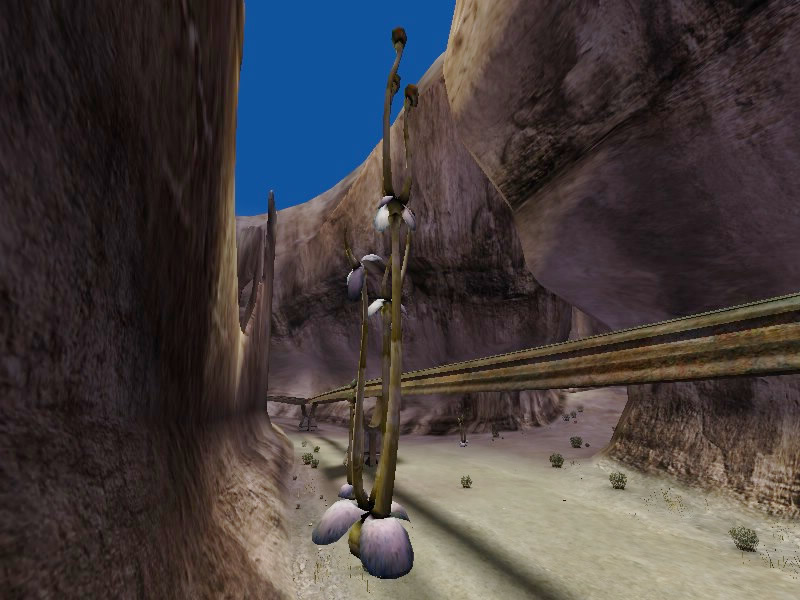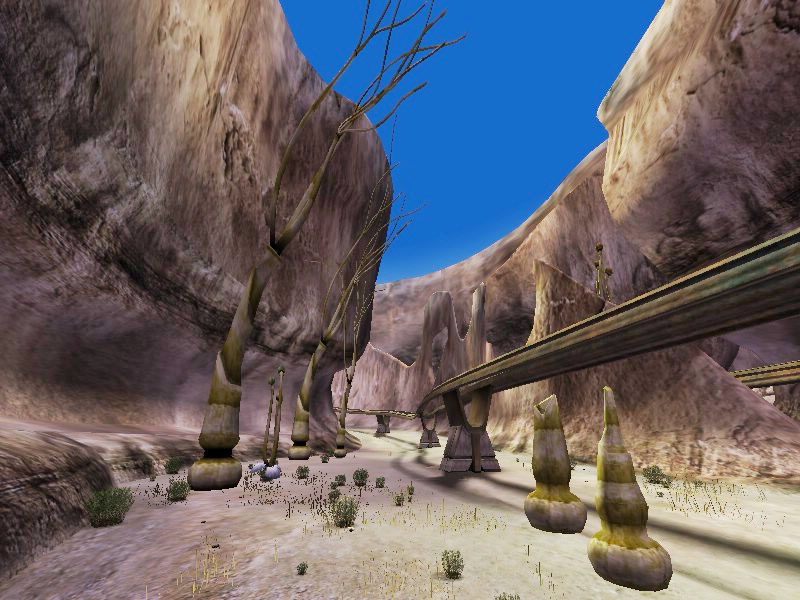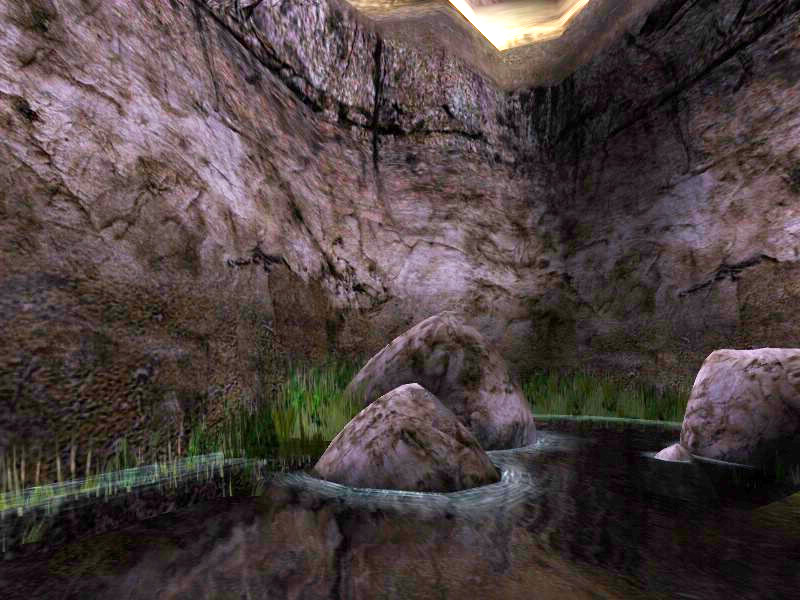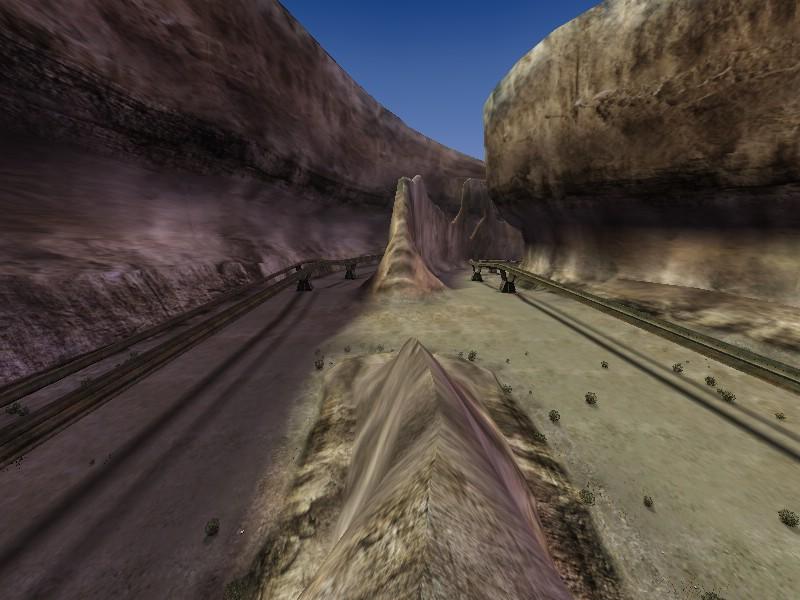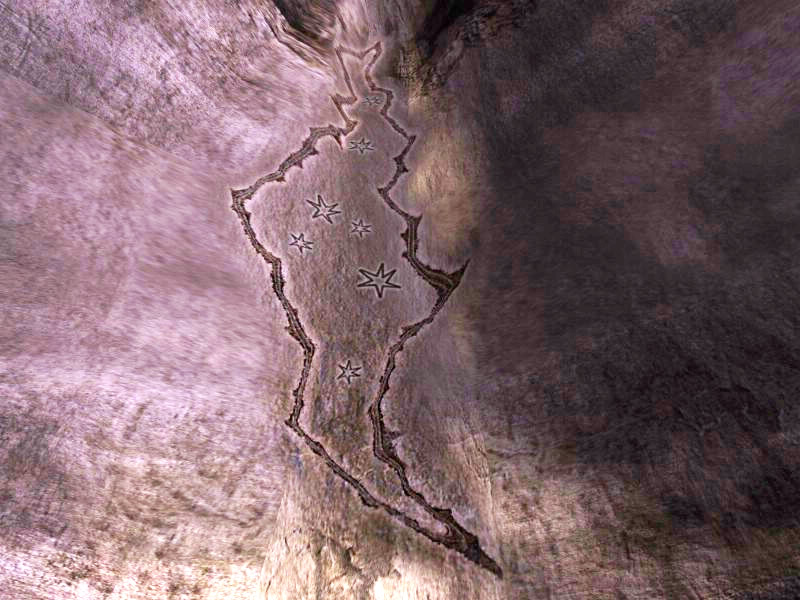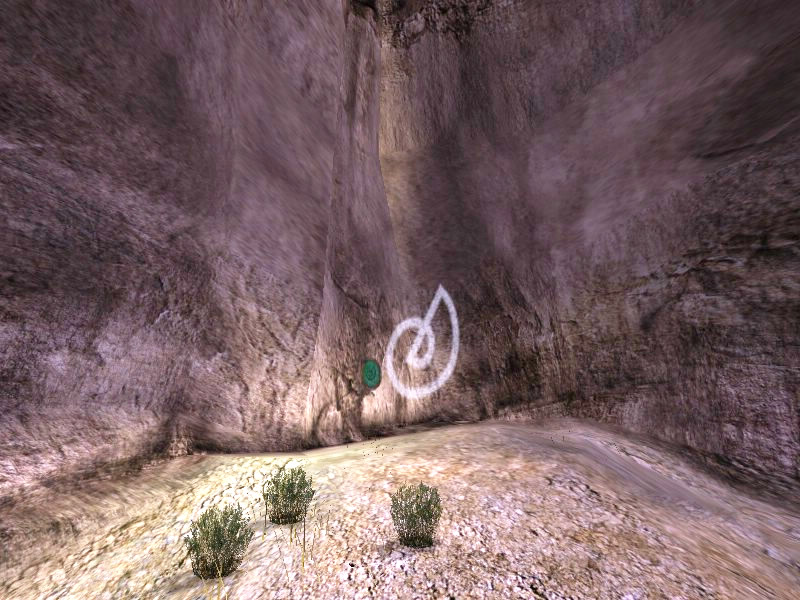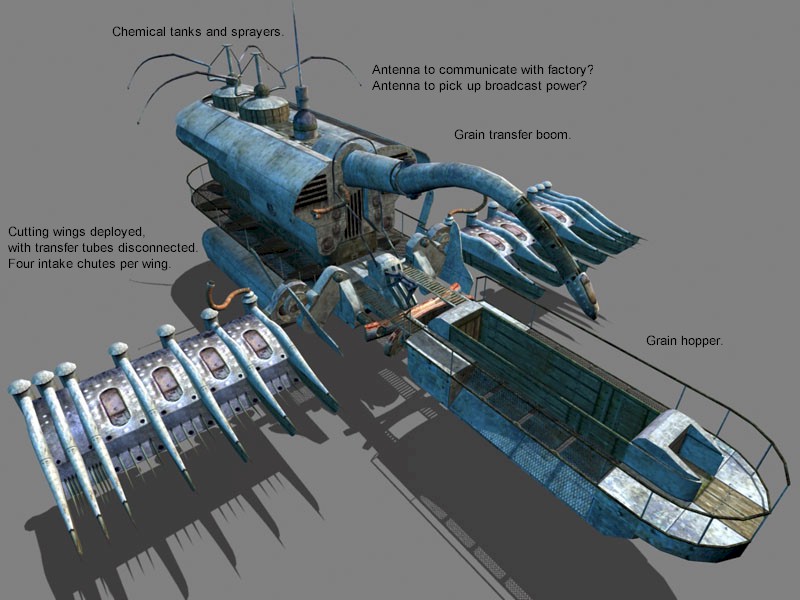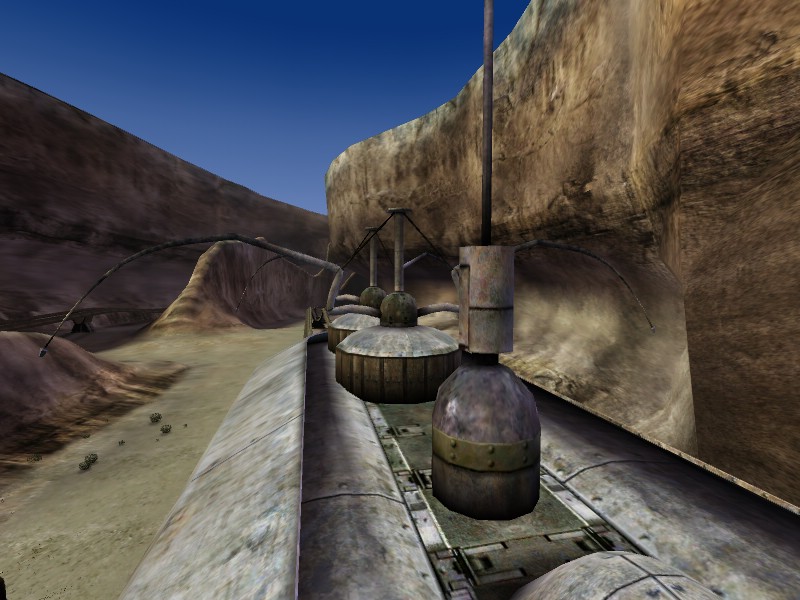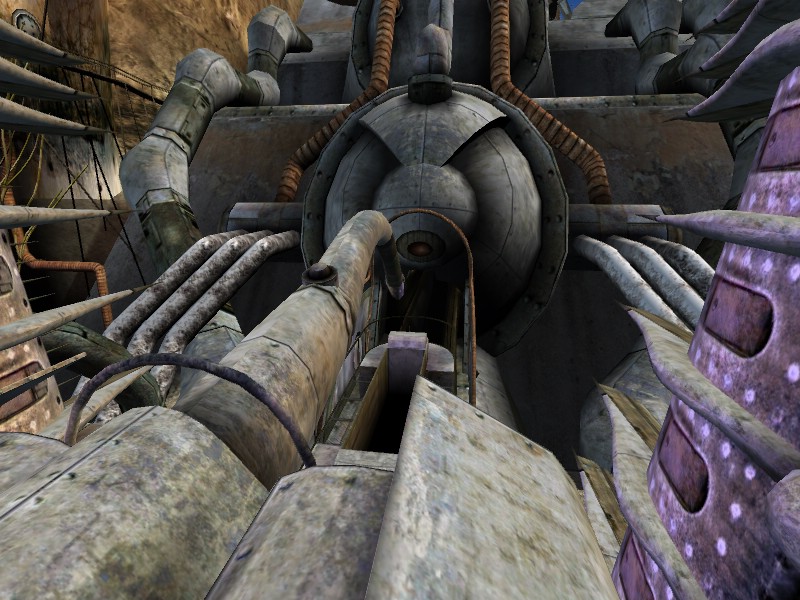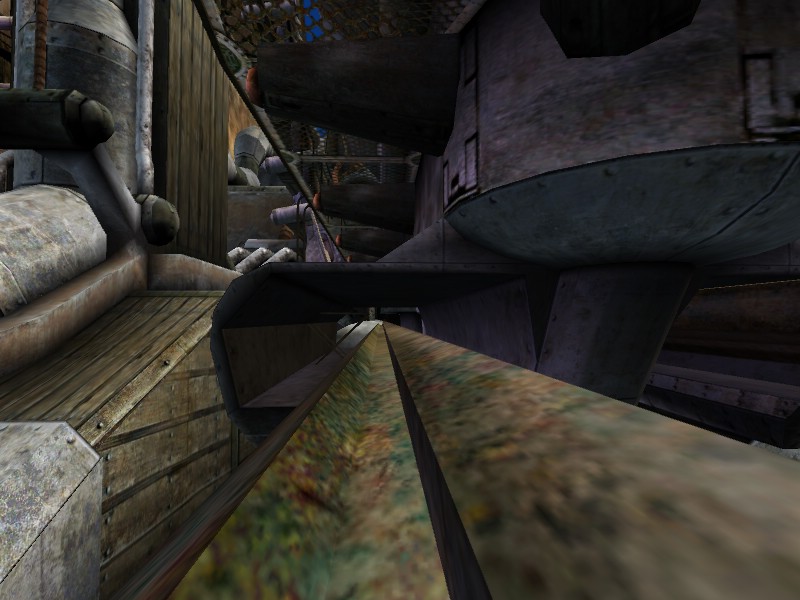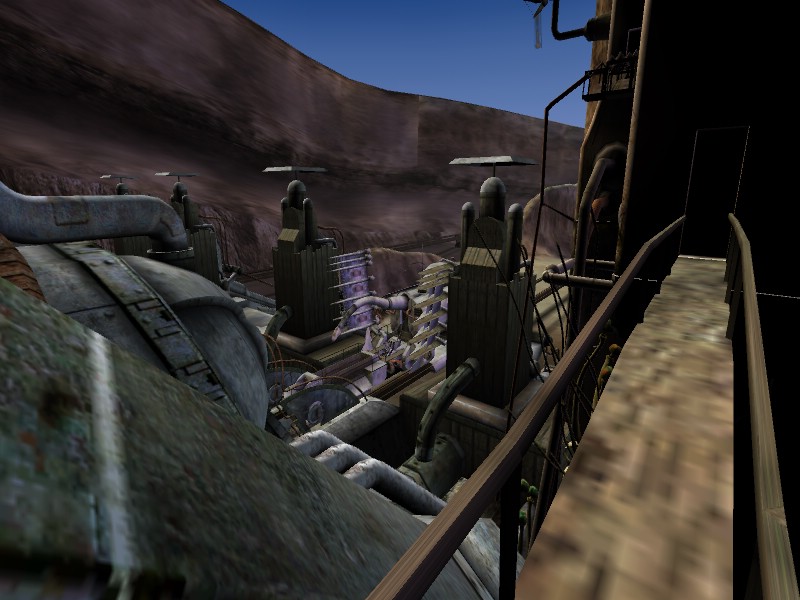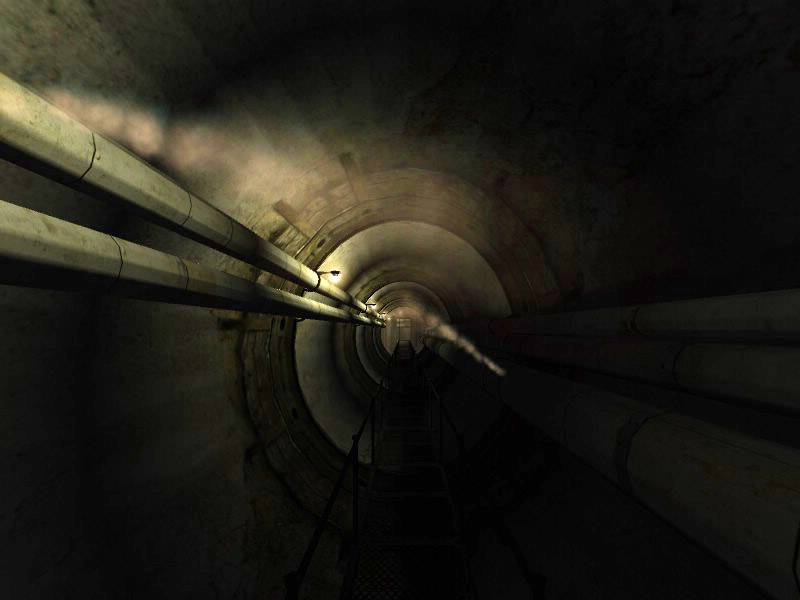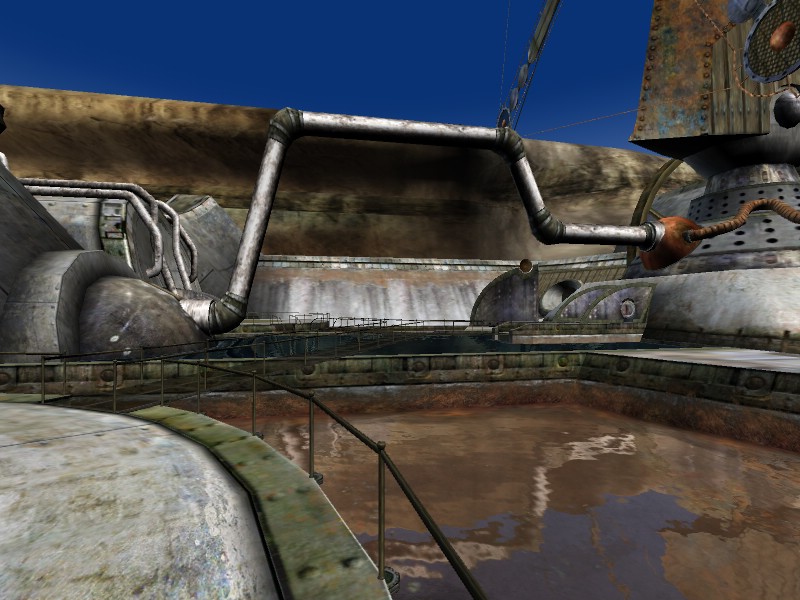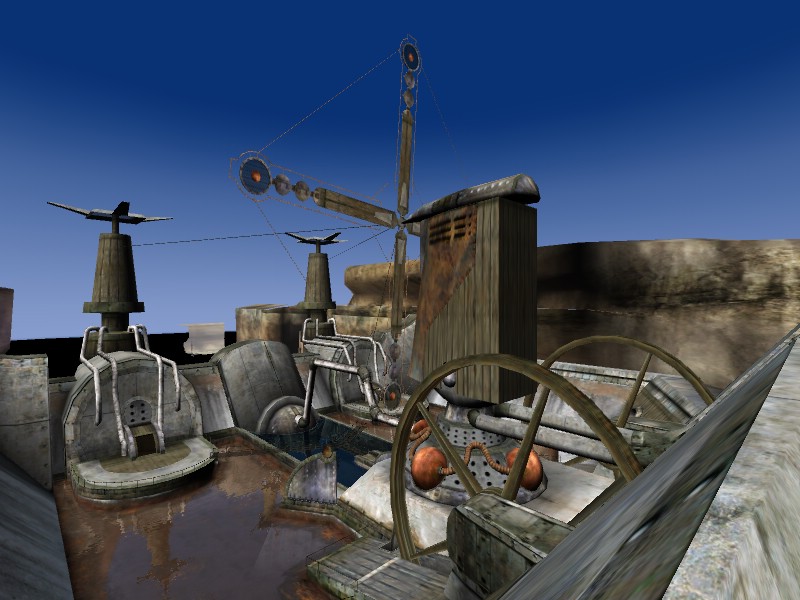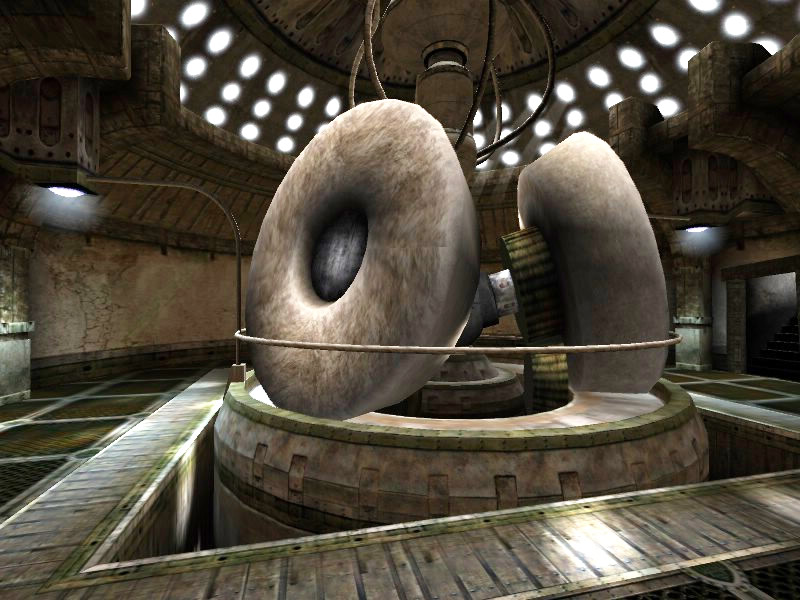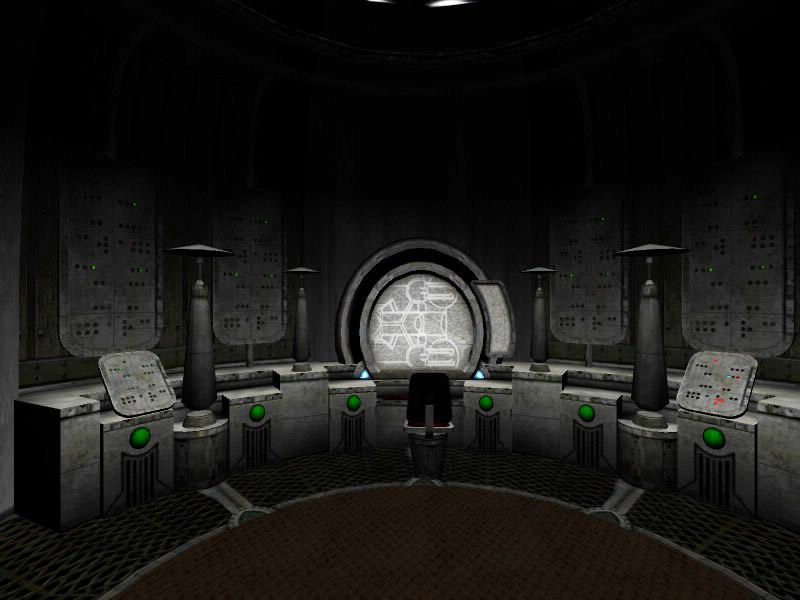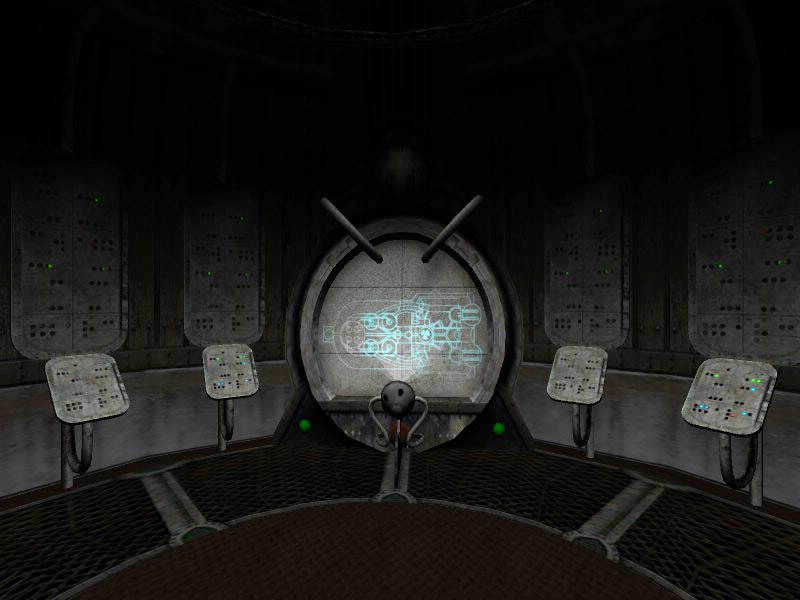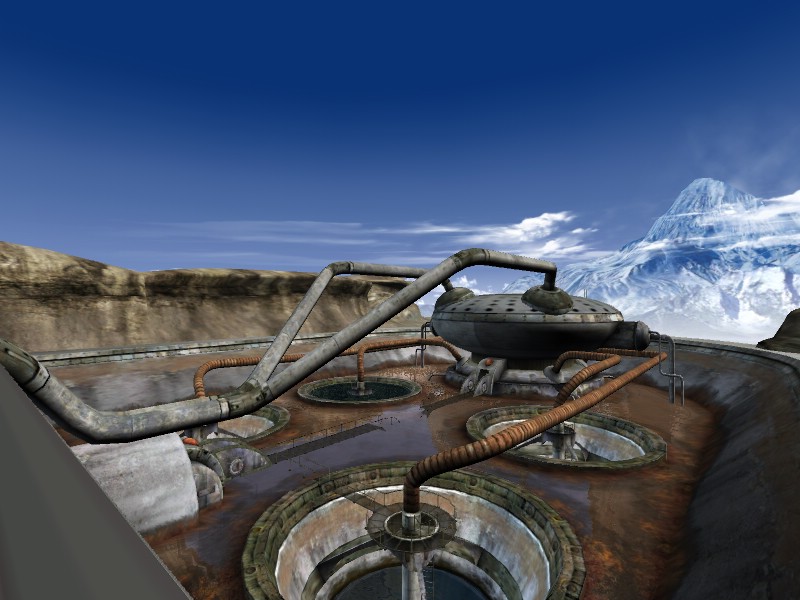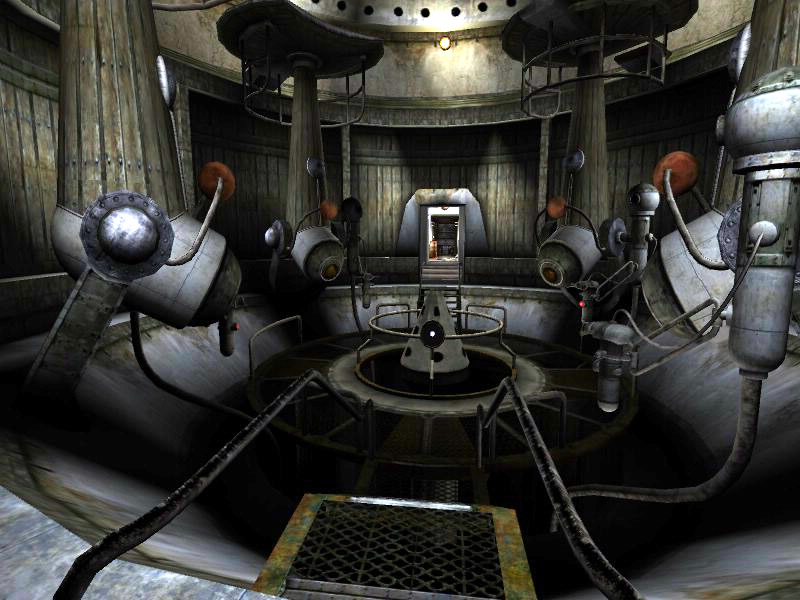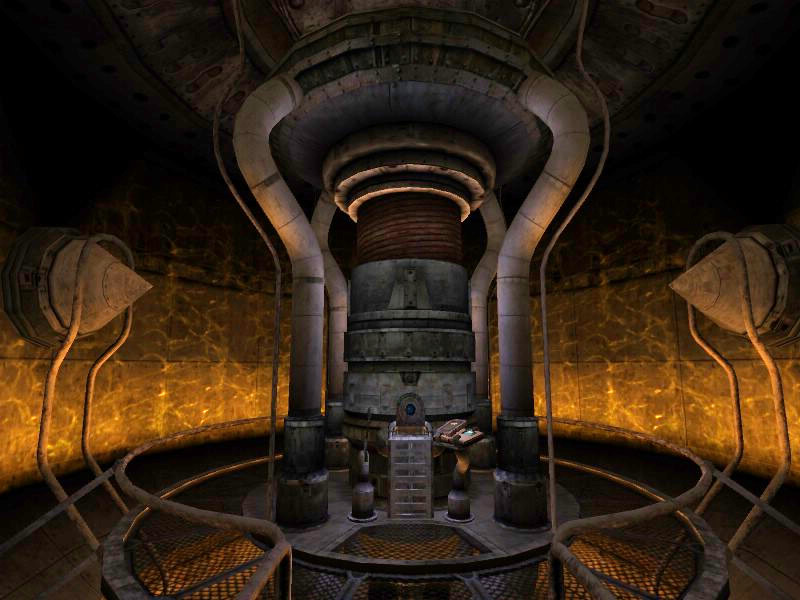

|
|
Er'cana is an Age that was originally owned and operated by the Guild of Caterers, and was used for the growing of edible grain. It was one of three such Ages which had names beginning with the "er" prefix. The other two were named Er’duna and Er’jerah, and it's known from Ti'ana's journals that the latter two Ages were used in feeding the crews that excavated the Great Shaft. We don't know what the names of the Ages mean, but er' is a common prefix for D'ni food production Ages, and the second word refers to the product or the main ingredient of a product that was produced there. Er'cana was later acquired by Guildmaster Kadish to produce concentrated grain pellets for an attempt to revive the luminescent algae in the cavern lake. According to record, the algae were no longer producing as much light as they had for so many centuries, and the periods of light and dark may have been falling off the thirty-hour cycle Ri'neref had set them on. The food pellets were designed to give the algae nutrients to promote light production. The pellets were experimental, and by the Fall of D'ni, only one testing location had been opened. That location is now called the Er'cana Silo, and is set in the Ashem'en district of the D'ni City. There, a pellet would be tested using a machine, and then dropped into the lake below to observe its effect. When the DRC began operating in the caverns, they were also interested in restoring the algae and encouraged explorers to try various formulas. The set up a function in viewers in the neighborhoods so that the results of the testing could be posted publicly. Kadish also placed clues to his Great Tree puzzle here and in the Silo. Yeesha appropriated that puzzle for her Path of the Shell quest, although she later changed its goal. You can still find traces of Kadish's clues and a few of Yeesha's original Fireplace puzzle pieces. Kadish's appear as two numbers divided by a colon. They referred to passages in Words of the Watcher, a book of prophecy. Notebooks containing a copy of some of it can be found in the Watcher's Pub. Yeesha also placed copies of the notebooks in each explorer's Relto, but removed them when she changed the quest.
At first, Yeesha's quest used the same clues, as well as journey cloths. Later, she changed the quest so that Kadish's clues were no longer relevant. Kadish used the passages from Words as hints on how to solve his puzzle room in the Watcher's Pub. But after using that puzzle for a time, Yeesha disabled it and sent explorers to the Cleft instead. Yeesha designed her quest to use Er'cana and Ahnonay, Ages written or owned by Kadish, and it became known as the Path of the Shell because of the shape of the journey cloth symbol.
The Canyon: The canyon that holds the factory is a dry riverbed. The river that flowed here was dammed by Kadish when he had the grain pellet factory constructed. The gate in this picture probably blocks the canyon off from the area where the grain was grown, and may have served as a secondary dam when it was necessary to allow some of the water out of the reservoir behind the factory.. It opened into a large enough space for the harvester machine to pass. Going by its design, it probably swung upward. You can see slots to clear the tracks as it lifts. No definitive explanation has been offered as to why they needed to partition off the canyon from the fields, and no one has reported traveling past the gate to see how far away the fields are.
Here, you can see two of the plants scattered around the Age. These shrubs are a variety of artemisia, and related shrubs can be found in the desert around the Cleft. The wild grass is related to the panic grass also found around the Cleft.
These are called tristalks, and are found only in this Age. They grow from a bulb and divide into three stalks. The individual stalks also divide into threes farther up as the plant matures. Tri-stalks have been estimated to reach about forty feet in height. There are two varieties found in Er'cana. This one has petal-like leaves at each joint where it splits into threes and smooth stalks. At the tips of each stalk, there is a bud-like growth.
The second type of tristalk grows from the same type of bulb, but has a single segmented trunk before it begins to divide. The stalks themselves lack the leaf-petals, and are much thinner than the other variety. The stalks end with bare tips rather than buds. The two strange looking objects are the bases of the same kind of tristalk.
In addition to the flora, you can hear many kinds of insects here, cicadas and crickets among them. There is a sinkhole down the left-hand riverbed. At the bottom, water grasses have taken root. It's unknown how such a lush species got here. Possibly the seeds were borne downstream when the river still flowed through. The pond may mark the water table under the surface of the riverbed.
This double canyon was carved by a river that divided in two in this area. When Kadish built the facility, he dammed the river and blocked the watercourse. The river had eroded away the softer portions of the sandstone, and left behind the harder sections, forming the center ridge. The ridge in turn eventually caused the river to split into two branches. The slope is subtle, but the canyon is lower at the far ends than it is at the factory.
Along the wall of the canyon, there is a small cave that Yeesha used for different purposes. In the first version of her quest, she simply had a representation of the Riven star fissure there. Later, when she changed the quest, she moved one of the journey cloths there and had a glyph portal form there, each journey cloth adding a stroke to the design.
The Harvester Machine: This machine is a combination harvester similar to the farm equipment used today, although it traveled on fixed railways instead of being independently steered. Like current combine harvesters, it performed three main tasks: reaping, threshing, and winnowing. The body of the machine above the catwalk is devoted to the grain processing. It probably does not contain a motor. Instead, it may have been operated using electric power broadcast from the factory.
The harvester served other functions instead of just being a grain collector. It was also used to spray fertilizers and pest repellents, and there were two large tanks in the body of the machine to hold chemicals. Each tank had two spray nozzles, for a total of four. This picture shows the top of the harvester, the upper portions of the chemical tanks, and the sprayer assemblies.
As a combination harvester, it sheared the grain stalks, separated the grain from them, and then blew the separated grain into a hopper pushed along in front of the machine. This picture shows the transfer boom and hopper. Framing the picture on the left and right are the cutting wings folded up in transport position. The lever that lowers them into harvesting position is jammed, or may not work until the machine passes the gate at the end of the canyon.
The harvester seems to ride on a magnetic levitation system. There are no wheels on either the harvester or hopper. The harvester brakes by folding the sides of the rail guides into the track rails; the friction causes the squealing sound you hear when the machine slows. In this picture you can see the gap caused by the harvester floating above the rails, and the brake folded inward and contacting the side of the rail. If you look carefully, you can see the struts used to pull the brake into contact with the rail.
The Factory: The factory is bilaterally symmetrical, with two independent production lines feeding one master oven complex. The structure is much more complex than can be readily explained. The two large towers you see in this picture are probably grain silos.
On the left side canyon wall, you can see a station whose purpose is not understood. Much of the machinery making up the factory has not been explained yet. It might be a water treatment facility, living quarters for the workers who ran the plant and harvester, or something else entirely. Another distinct possibility is that it's a steam generation plant, which produces both steam and broadcast electricity for the operation of the harvester and the rest of the facility. The three large antennae on top of the facility would be for broadcasting electricity in that scenario, and the pipes leading from it to the factory would be to carry steam.
When the grain hopper is moved into the factory, the grain in the hopper was sucked out through two large pipelines connecting to either side of its lower fin assembly. This is a picture of the side of the fin structure beneath the hopper. It shows one of the rings that the pipes attach to. It's just barely visible in profile. Look for the light gray wedge with rivits on it.
This next picture shows the hopper connected to the vacuum pipes.
After sending the hopper back to the harvester, it's much easier to see the vacuum pipes that connect to the hopper.
The tall structures are vacuum pumps that sucked the grain out of the hopper and blew it through the pipes to the silos.
While it can be seen here that steam was used in the factory. While it is not known for certain what it was used for, my best guess is that the steam might have been used to drive the vacuum pump rotors. It's been noted that the steam has a pinkish-orange coloration, which is unexplained. Rust in the pipes, perhaps?
Grain was moved from the hopper rooms to the tall silos you see from the front of the factory, then moved to the mill through the large pipe you see here to be ground into flour.
This is a view of the mill area of the factory. The silos, vanes, and flywheels can be seen. Milled flour was blown through the large pipeline you can see behind the nearest flywheel over the wall and on to the oven control room. Since the vanes are not a very good shape for airfoils, it's not particularly likely that this was a windmill. Explorer r'Tayrtahn proposed that they might be to collect broadcast electricity, which is as good an idea as any, although other areas of the factory use spike antennae for that. The vanes may serve the same function as the flywheels, using momentum to aid in keeping the millstones rolling. The two large spoked wheels are definitely flywheels; they are called that in DRC files. Given that information, their purpose would have been to provide momentum to the operation of the grinding stones. This would have made easier for the rest of the machinery to keep turning, and reduced the power requirements for the grinding operation after the initial startup process was completed. The building is set into operation by throwing a large power switch that is located near the millstones. That would have allowed electricity collected by the vanes to flow into the electric motors that turn the stones, flywheels, and vanes. The vanes and flywheels, once turning, would reduce the amount of power needed to keep the stones in motion after an initially large draw of electricity to start them up.
These are the three massive millstones beneath the windmill tower. They are driven by an electric motor, which is probably located in the large round case in the center, below the axles of the stones. This drives a vertical driveshaft that goes up into the tower to spin the vanes, and driveshafts located below the motor to turn the flywheels. The axles of the millstones are unpowered; they are turned by the small gear that meshes with the large gear attached to the axle.
This was the facility's master control room. One man could monitor the entire operation, just as one man could operate each of the combine harvesters. There were probably no more than a handful of men working in the Age at any given time. The operation was highly automated, and since it was experimental, it only produced small quantities of the finished pellets.
These are called mixing vats, but it's unknown what was being mixed here. The flour went straight to the mixing room through the large overhead pipes, while the liquid from the vats moved there through the rusty pipes. Each vat has a large drainage pipe attached, presumably for emergencies or to maintain or clean them. Since the water in the vats is clean, it's currently thought that the vats were used to aerate the water.
This is called the oven room by explorers, but that name is mistaken. It is a mixing room where recipes could be set. Flour and the liquid from the mixing vats were combined here, and then sent to the actual oven, which is in a chamber in the dam that is called the Pellet Room. The controls seem to set the oven temperature, baking time, and proportion of flour to liquid.
This is the dam that forms the reservoir. The round building is the oven room, and the small dome on the right covers the pellet room. The four spike antennas on the dome are now thought to collect broadcast electricity from the facility on the canyon sidewall.
This is called the pellet room, and contains the actual oven that molds and bakes bread pellets using preprogrammed temperatures, times, and ingredient proportions. In the time of Kadish, only the linking book to the testing silo was here. When Yeesha co-opted the Age for her quest, she had the Bahro place a linking stone to a special cave they constructed for her, which is now known as the hourglass cave.
The Er'cana Silo: The Silo is part of another article. A link to it can be found at the top of this page. Why did Kadish create Er'cana? At the beginning of this article, I mention the accepted reason, which was to renew the health of the algae. That is true. However, what remains to be explained is why Kadish took on the task. It's well known that Kadish wanted to be the Grower prophesized in The Words of the Watcher, and spent a great deal of effort on convincing the rest of the D'ni that he was fulfilling the foretold events. One of the events foretold was that the Grower would return light to the cavern. Kadish was seeking a way to refresh the lake algae, which was failing to produce the light level Ri'neref had written into the Age. By doing so, he would have brought light back to the caverns. Yeesha mentioned that in one of her speeches, in which she also pointed out the ways that she herself was fulfilling the prophecies. Here is the quotation: Words fulfilled. Do you believe? I have taken time. You know his body no longer lies in his Vault. I have seen new life, his new life, and I have followed the Shell, round and round and back again. I taught you the same. What will grow? The Tree of All Things. Who will grow it? The Grower. I will grow it. The Grower is the one who leads, so you will follow me. Who Links at will? The Grower. The Grower banishes the darkness, and brings light to the Cavern. Have you seen the light? To think they believed him… with such…. It is I who command light. Light. Rest in the light. Sing in the time of joy. Call in the time of dark. Weep in the time of pride. And take my hand again, young one. Time conquered, light to darkness, linking without Books. You have done well. You have seen words fulfilled. But still more to be fulfilled. There is a new tree. Do you believe? |
Myst, the Myst logo, and all games and books in the Myst series are registered trademarks and copyrights of Cyan Worlds, Inc. Myst Online: Uru Live is the sole property of Cyan Worlds Inc. The concepts, settings, characters, art, and situations of the Myst series of games and books are copyright Cyan Worlds, Inc. with all rights reserved. I make no claims to any such rights or to the intellectual properties of Cyan Worlds; nor do I intend to profit financially from their work. This web site is a fan work, and is meant solely for the amusement of myself and other fans of the Myst series of games and books. |
